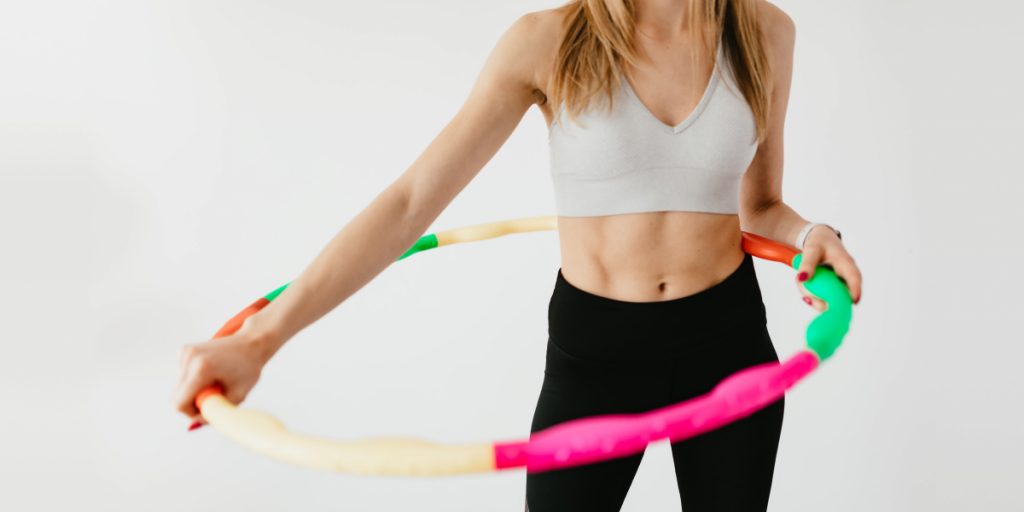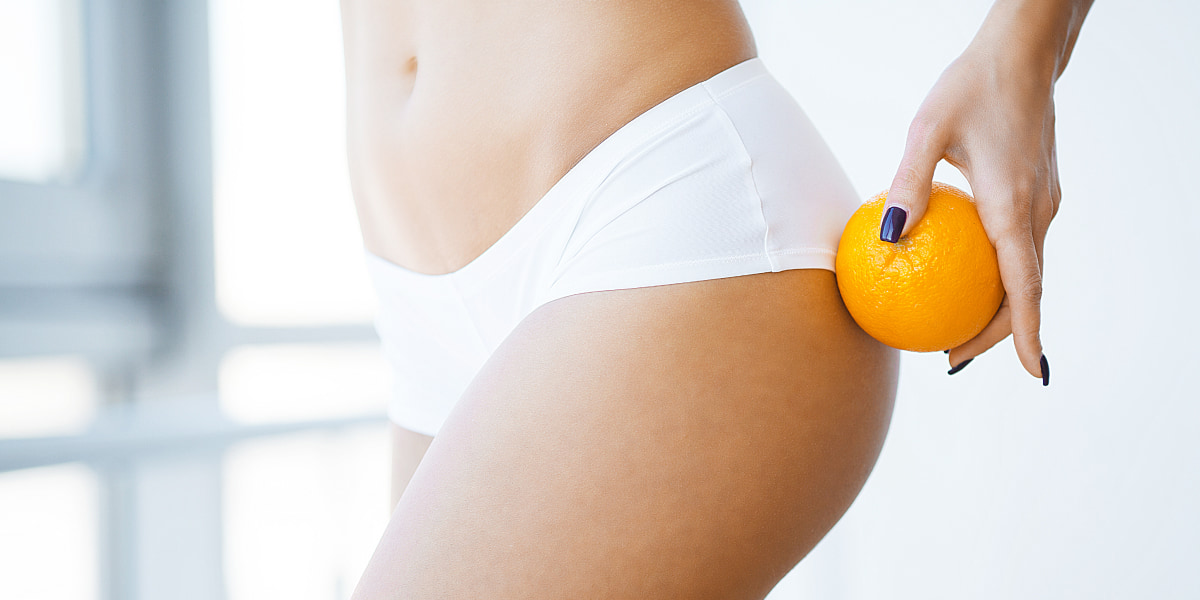Published on February 20th, 2023
Last updated on August 30th, 2023
Hula Hoop Benefits: Exercises That You Need To Do

Hula hooping is a fun and effective form of exercise. It has been around for centuries. It originated as a traditional dance performed by the indigenous people of Hawaii. But has since evolved into a popular form of fitness and recreation. The basic concept of hula hooping is to keep a hoop spinning around the waist. For it, you use your hips and abdominal muscles. There are hula hoop workout benefits:
- Cardiovascular health;
- Weight loss;
- Core strength;
- Balance and coordination;
- Stress relief;
- Flexibility;
- Coordination and rhythm;
- Improving posture;
- Improving self-esteem and body-image;
- Socializing.
The benefits of hula hooping for health are numerous. It is a great cardiovascular workout. And it can help improve your overall fitness and increase endurance. It is also an effective way to tone your abs and hips, as well as improve coordination and balance. Hula hooping is also a low-impact form of exercise. It is suitable for people of all ages and fitness levels.
Hula-hooping is also a fun way to burn calories. Regular practice can help you create a calorie deficit and lose weight over time. Hula hooping can burn around 100-150 calories in a 10-minute session. It is a great way to boost your weight loss efforts.
When it comes to selecting a hula hoop, opt for one that is the right size for you. The right size hula hoop will depend on your height and body shape. A good rule of thumb is to select a hoop that comes up to your navel or hip when placed on the ground.
In this article, we’ll talk about hula hooping benefits and how to use hula hooping for fitness.
How To Use A Hula Hoop?

As we have already said, a hula hooping workout is a fun and enjoyable activity that can provide a variety of benefits for the body and mind. To get started with hula hooping, buy the right equipment. The second main thing is to understand the proper technique.
1. Finding Equipment
The first step in getting started with hula hooping is to purchase a hoop. Hoops come in different sizes, weights, and materials. Children and beginners may prefer a lighter, smaller hoop. Adults and experienced hoopers may prefer a larger, heavier hoop. Opt for a hoop that is the right size and weight for your body.
2. Finding The Right Spot
To start hooping, find a clear space with enough room for you. It will help you to move around comfortably. We recommend hooping on a surface that is not slippery such as a carpet or a mat. Consider your surroundings. You should make sure there are no obstacles that could get in the way or cause injury.
3. Positioning The Hoop
Hold the hoop with both hands, one hand on either side of the hoop. Position the hoop around your waist, resting it on your lower back. Keep your feet shoulder-width apart, and your knees slightly bent.
4. Starting The Hoop
It’s the next way of hula hooping as exercise. To start the hoop spinning, give it a small push with your hips. At this time, simultaneously move your hands in a circular motion. Keep your movements small and smooth, allowing the hoop to rotate around your waist.
5. Keeping The Hoop Spinning
To keep the hoop spinning, move your hips in a circular motion. Keep your arms relaxed and let the hoop spin around your waist. It’s important to keep your core engaged and maintain a steady pace.
6. Changing Direction
To change the direction of the hoop, simply change the direction of your hips. You can also change the direction of the hoop by spinning it around your hand, known as “hooping on hands.”
7. Adding Tricks
Once you have mastered the basic technique, you can add tricks to your hooping routine. Tricks such as “waist hooping,” “walking with the hoop,” “hooping on one leg,” and “hooping on hands” can be added to make your hooping more fun and engaging.
So, hula hoop has a lot of benefits, but it is a skill that takes time and practice to master. Be patient with yourself. Don’t get discouraged if you have trouble spinning the hoop. Keep practicing, and you’ll soon be hooping like a pro.
What Are The Hula Hoop Benefits?

It is a low-impact form of exercise that people of all ages and fitness levels can enjoy. So, here are some of the hula hoop benefits:
- Cardiovascular health. Hula hooping as cardiovascular exercise can help to improve heart health. It gets the heart pumping and increases blood flow, which can help to lower the risk of heart disease.
- Weight loss. It can burn up to 400 calories per hour, making it an effective way to lose weight and tone the body.
- Core strength. The constant rotation of the hoop around the waist works the abs, obliques, and lower back. It will help to tone and strengthen the core.
- Balance and coordination. It helps to improve balance and coordination. It’s because it challenges the body to maintain control of the hoop.
- Stress relief. Such activity is fun and enjoyable and can help relieve stress. It is a form of moving meditation that can help to clear the mind and reduce stress levels.
- Flexibility. Hula hooping can help to improve flexibility and range of motion. It also helps to release tension in muscles and joints, which can help to prevent injuries.
- Coordination and rhythm. Hula-hooping helps improve coordination and rhythm. It requires using different muscle groups and movements that can improve hand-eye coordination, spatial awareness, and overall body coordination.
- Improving posture. Hula hooping as exercise requires the use of the core muscles. It helps to engage the shoulders and back muscles, which can help improve posture. The repetitive motions of hula hooping can help to correct any imbalances in the body. It also improves posture over time.
- Improving self-esteem and body image. It helps to improve body awareness, self-esteem, and a sense of accomplishment as the person becomes more skilled in the activity.
- Socializing. It is also a social activity enjoyed by friends or in group classes. It is a great way to meet new people, bond with friends and family, and build a sense of community.
Bottom Line
In conclusion, a hula hoop has a lot of benefits for the body and mind. Hula hooping can help to improve cardiovascular health, weight loss, core strength, balance and coordination, stress relief, flexibility, coordination and rhythm, posture, self-esteem and body image, and socializing. It can be enjoyed by people of all ages and fitness levels and can be a fun way to add variety to your workout routine.
FAQ
What Does Hula Hooping Do For The Body?
Hula hooping provides a full-body workout, improving cardiovascular health and strengthening core muscles. Also, it helps to burn calories and boosts coordination, balance, and flexibility. Also, it relieves stress. It’s a fun way to burn calories and improve physical fitness.
How Many Calories Can I Burn By Hula Hooping?
Calories burned during hula hooping can vary depending on the intensity and duration of your workout, but on average, you can burn around 100-150 calories in a 10-minute hula hoop session.
Can Hula Hooping Help Me Lose Weight?
Hula hooping can be an effective tool for weight loss. But it will be best to combine it with a healthy diet and other forms of exercise. The calorie-burning potential of hula hooping can help you create a calorie deficit and lose weight over time.
What Muscles Does The Hula Hooping Work?
Hula hooping primarily works the core muscles, including the abs, obliques, and lower back. It also works the hips, glutes, and thighs.
How Do I Know If My Hula Hoop Is The Right Size For Me?
The right size hula hoop for you will depend on your height and body shape. A good rule of thumb is to select a hoop that comes up to your navel or hip when placed on the ground.
Can I Hula Hoop If I Have Back Or Joint Pain?
Hula hooping can be a low-impact form of exercise, making it suitable for people with back or joint pain. However, if you have any concerns, you should consult with your doctor before starting any new exercise program.





